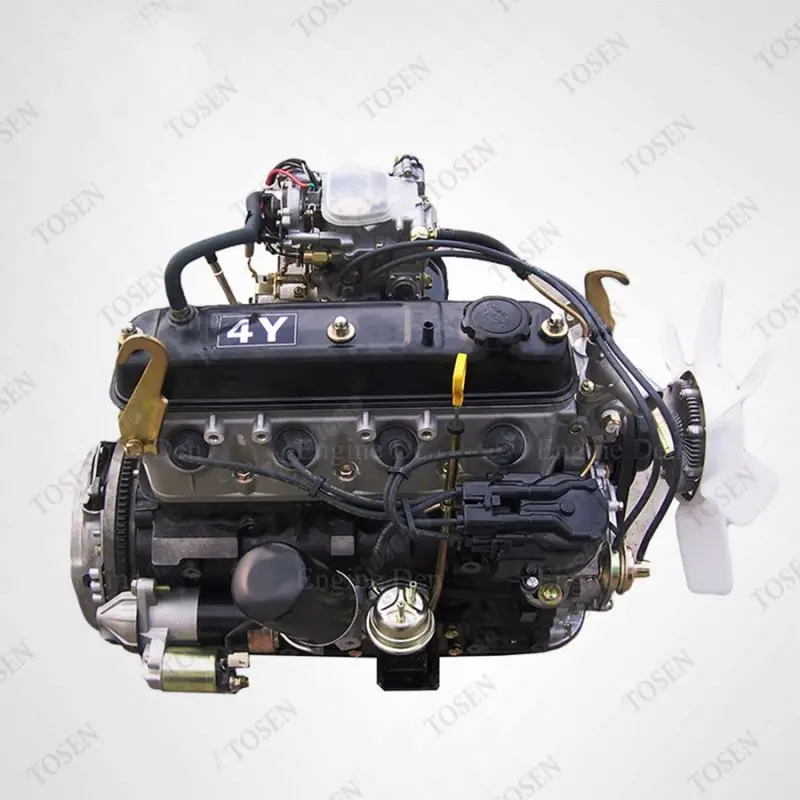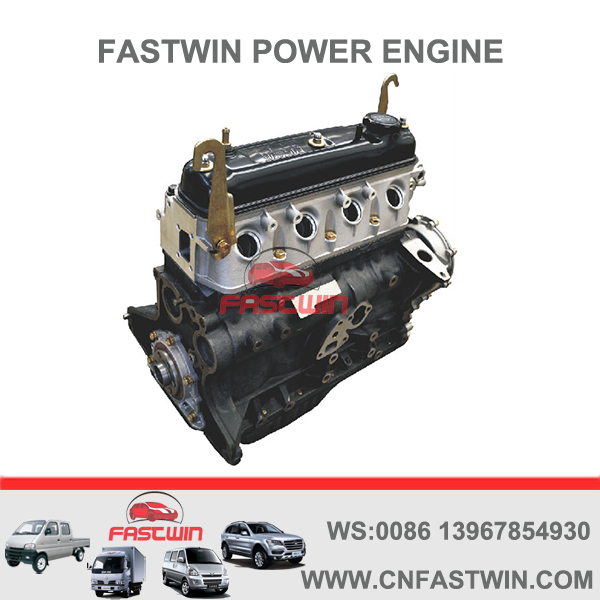Why the Engine Is the Finest Option for Performance and Performance in Your Car
The engine continues to be a crucial element in auto style, mainly due to its significant impact on both performance and effectiveness. As advancements in modern technology enable smaller sized engines to provide exceptional power while enhancing gas economy, the assimilation of functions such as turbocharging and hybrid systems becomes progressively important.
Comprehending Engine Types
Understanding the various kinds of engines is crucial for optimizing efficiency and performance in auto style. The main engine types include inner burning engines (ICE), electrical engines, and crossbreed systems, each offering unique advantages and limitations.
Inner burning engines, which can be additional categorized right into gas and diesel variations, depend on the burning of gas to produce power. Gasoline engines typically give greater RPMs and much better acceleration, while diesel motor are understood for their torque and fuel performance, making them suitable for heavy-duty applications.
Electric engines, on the various other hand, use electric motors powered by batteries or gas cells. They use instant torque distribution, leading to smooth acceleration and reduced discharges. The efficiency of electrical engines is considerably more than that of ICEs, making them a prominent choice for eco-conscious customers.
Hybrid systems incorporate both internal burning and electric engines, leveraging the toughness of both innovations. They maximize fuel intake by utilizing electric power at lower rates and switching to fuel or diesel for higher rates or heavier tons.
Choosing the ideal engine kind is vital for achieving preferred efficiency metrics and environmental sustainability in modern-day automotive design.
The Influence of Engine Size
Engine dimension frequently plays an essential role in figuring out an automobile's performance and effectiveness. Generally determined in litres or cubic centimeters, engine dimension directly influences the power result and torque characteristics of an automobile. Bigger engines generally generate even more horsepower, allowing higher velocity and greater top speeds. This is specifically beneficial in applications needing durable efficiency, such as sporting activities vehicles and durable vehicles.
Nonetheless, enhanced engine size often associates with reduced fuel performance. Smaller sized engines can deliver adequate efficiency for daily driving while advertising much better efficiency, making them a preferred choice in mid-size and compact automobiles.
Furthermore, advancements in engine layout, such as turbocharging and direct gas injection, permit smaller engines to achieve power degrees comparable to their bigger counterparts. This pattern emphasizes the relevance of not entirely concentrating on engine size yet likewise considering general vehicle style and technology (4y engine). Eventually, the influence of engine size on efficiency and efficiency highlights the need for consumers to analyze their particular driving demands and preferences when selecting an automobile
Advanced Engine Technologies
Developments in engine modern technologies have actually considerably improved the landscape of auto efficiency and efficiency, building upon the foundational ideas developed by engine dimension. Especially, advancements such as turbocharging and direct fuel injection have allowed smaller sized engines to provide power degrees formerly linked with bigger equivalents. Turbochargers press air getting in the engine, permitting increased power output without a corresponding boost in engine size, while direct injection optimizes fuel delivery, enhancing combustion efficiency.
Additionally, variable valve timing systems have actually arised as a crucial technology, allowing engines to adjust shutoff procedure based upon driving problems. This versatility enhances both performance during velocity and gas effectiveness during cruising. Hybrid and electrical engine modern technologies additionally show the shift in automotive design, incorporating typical interior combustion engines with electric motors to take full advantage of effectiveness while minimizing exhausts.
Moreover, official site improvements in materials science have actually caused lighter, a lot more resilient engine components, better improving performance and long life. The combination of advanced electronic devices and engine control systems also permits real-time modifications, ensuring optimum performance throughout different conditions. Jointly, these sophisticated engine modern technologies not just improve automobile performance yet also add to a more lasting automobile future, showing the continuous advancement of engine design.
Harmonizing Power and Efficiency
Striking an equilibrium between power and effectiveness is crucial in contemporary automotive style as manufacturers seek to fulfill increasingly rigid emissions guidelines while pleasing consumer demand for efficiency (4y engine). The challenge depends on maximizing engine qualities to provide durable power output without compromising gas economy
To accomplish this equilibrium, designers employ different methods, such as turbocharging, which boosts engine power forcibly in even more air, enabling a smaller engine displacement that enhances gas performance. Variable shutoff timing technologies likewise play a considerable duty, enabling engines to adjust their performance attributes based upon driving problems, therefore enhancing both power and efficiency.
Additionally, improvements in products and making strategies have actually brought about lighter engine components, which reduce overall car weight and enhance fuel effectiveness without jeopardizing power. Hybrid innovations have likewise become a practical service, integrating conventional interior combustion engines with electric powertrains to provide an increase in efficiency while keeping reduced discharges.

Future Patterns in Engine Style

Moreover, the growth of advanced products, such as light-weight composites and high-strength alloys, is readied to revolutionize engine elements. These products not just reduce weight however additionally enhance thermal performance, thereby maximizing efficiency. In addition, producers are discovering variable compression ratios, allowing engines to adjust to various driving problems, improving both power outcome and gas economy.
Better, the rise of expert system and artificial intelligence in engine design is making it possible for predictive maintenance and real-time efficiency optimization. This modern technology can lead to engines that self-adjust for maximum effectiveness based upon driving patterns.

Verdict
In conclusion, the engine acts as a vital part in attaining optimum efficiency and efficiency in modern vehicles. Advanced technologies, such as turbocharging and hybrid systems, enhance power output while reducing fuel usage and discharges. The interplay between engine size and design continues to evolve, websites driving innovations that stabilize exhilarating efficiency with ecological sustainability. As auto design advances, the focus on establishing efficient, powerful engines will certainly continue to be extremely important in forming the future of transportation.
Additionally, innovations in engine style, such as turbocharging and direct gas shot, allow smaller sized engines to accomplish power levels equivalent to their larger equivalents.Advancements in engine innovations have actually substantially reshaped the landscape of auto performance and efficiency, structure upon the foundational principles established by engine dimension. Turbochargers compress air getting in the engine, enabling for raised power outcome without a corresponding boost in engine size, while straight shot enhances gas shipment, boosting combustion performance.
Hybrid and electrical engine technologies additionally illustrate the change in auto style, incorporating conventional inner combustion engines with electric motors to maximize effectiveness while lowering discharges.
Jointly, these innovative engine innovations not just boost car efficiency yet also contribute to an extra lasting automobile future, showing the recurring evolution of engine design. (4y engine)